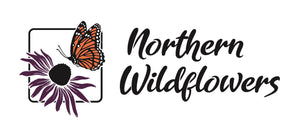5 Unlikely Butterfly Host Plants

By now many gardeners are aware of the important connection between milkweed and monarch butterflies. Most butterflies and moths rely on often a single plant host species. Butterflies will seek out the host plant to lay their eggs and the caterpillars will feed on the plant until they develop into adults. Once metamorphosis occurs, adults will emerge and feed on a wider variety of nectar sources. There are countless native plants, some perhaps already in your garden, which share these important host plant relationships with the butterflies and moths of our region. Here are five surprising butterfly and moth host plants.
1) Black-eyed susans: this infamous, easy-to-grow native is also the host plant of the silvery checkerspot (pictured) and the Northern pearl crescent.


2) Little bluestem: this gorgeous blue-green native grass is also the host plant of the little wood satyr butterfly (pictured), the common ringlet and wood nymph.


3) Canada tick trefoil: this nitrogen fixing native legume is also the host plant of spring azures (pictured), summer azures and the silver spotted skipper.


4) Field thistle: often considered a nuisance, this prickly native produces an abundance of nectar, its seeds are a food source for birds and small mammals and it is the host plant of the painted lady butterfly.


5) Evening primrose: this native gets its name because its flowers open at night, making it an important nectar source for many moths, it is also the host plant of the white-lined sphynx moth.


